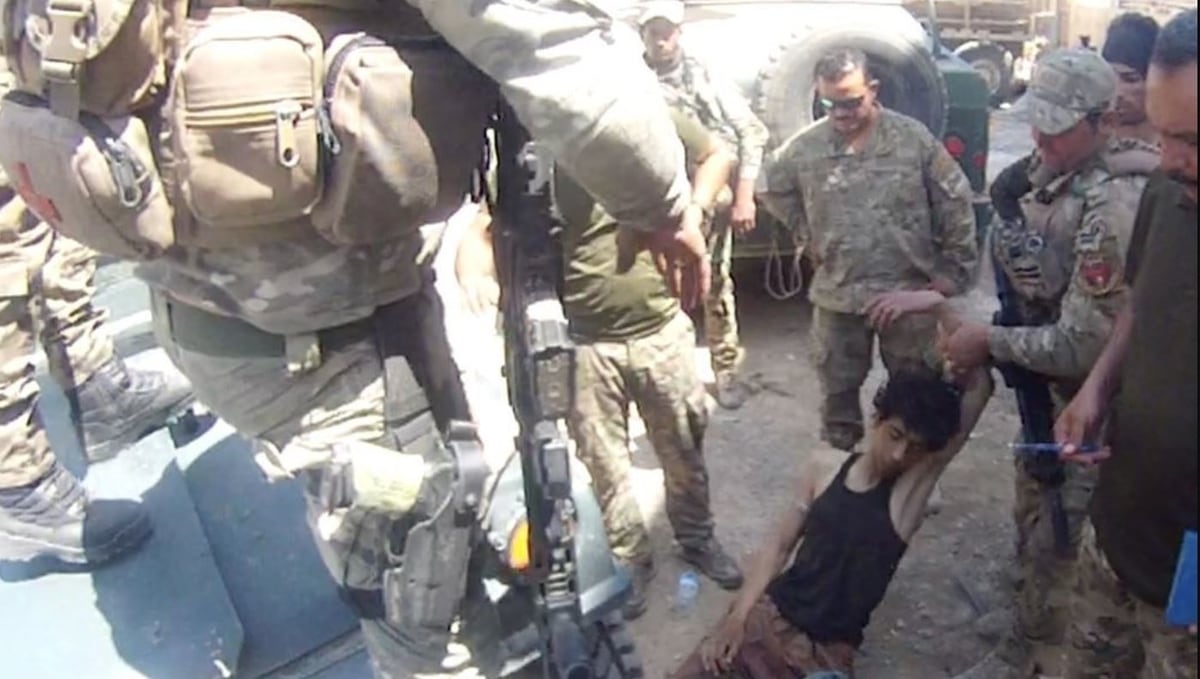On May 3, 2017, in the waning moments of an Islamic State prisoner of war’s young life, a group of SEALs began a macabre series of medical procedures on what was left of his body, efforts that appear to have had little to do with saving him and might’ve killed him long before Special Warfare Operator Chief Edward “Eddie” Gallagher allegedly knifed him to death.
Gallagher is slated to begin a court-martial beginning on June 10 at Naval Base San Diego, where he faces charges that include the premeditated murder of the ISIS teenager and a pair of shootings tied to the alleged deaths of an elderly man and a young girl — accusations he not only strongly denies but insists they were made to frame him.
Building on a series of previous court filings and reams of other evidence that’s been provided to Navy Times — including video footage of the alleged murder scene — a motion filed late Sunday by Gallagher’s legal team accuses military prosecutors and Naval Criminal Investigative Service agents of knowingly hiding or misrepresenting key facts in the court-martial case that could exonerate him of the murder rap.
Alleging a wide range of misconduct committed by prosecutors and NCIS agents, the legal filing asks military judge Capt. Aaron Rugh to dismiss all charges against Gallagher, 39.
At issue is a re-interview session conducted by prosecutors of a first class special warfare operator — an SO1 — who was next to the seriously wounded Iraqi ISIS fighter before he died, about 20 minutes after Iraqi troops brought him to the SEAL compound for treatment.
According to the defense motion, the SEAL’s words offer “a significantly exculpatory alternative theory” of the boy’s death, information so significant that it promises to “completely eviscerate” the prosecution’s theory of the case and “explains why so many of the witnesses are reticent to fully tell their stories."
Both Naval Special Warfare and military prosecutors continue to request Navy Times to cloak the names of eyewitnesses, including one who is now a civilian, citing their potential redeployment overseas.
With a public trial looming, Navy Times has informed officials that this is the last story that will shield their identities.
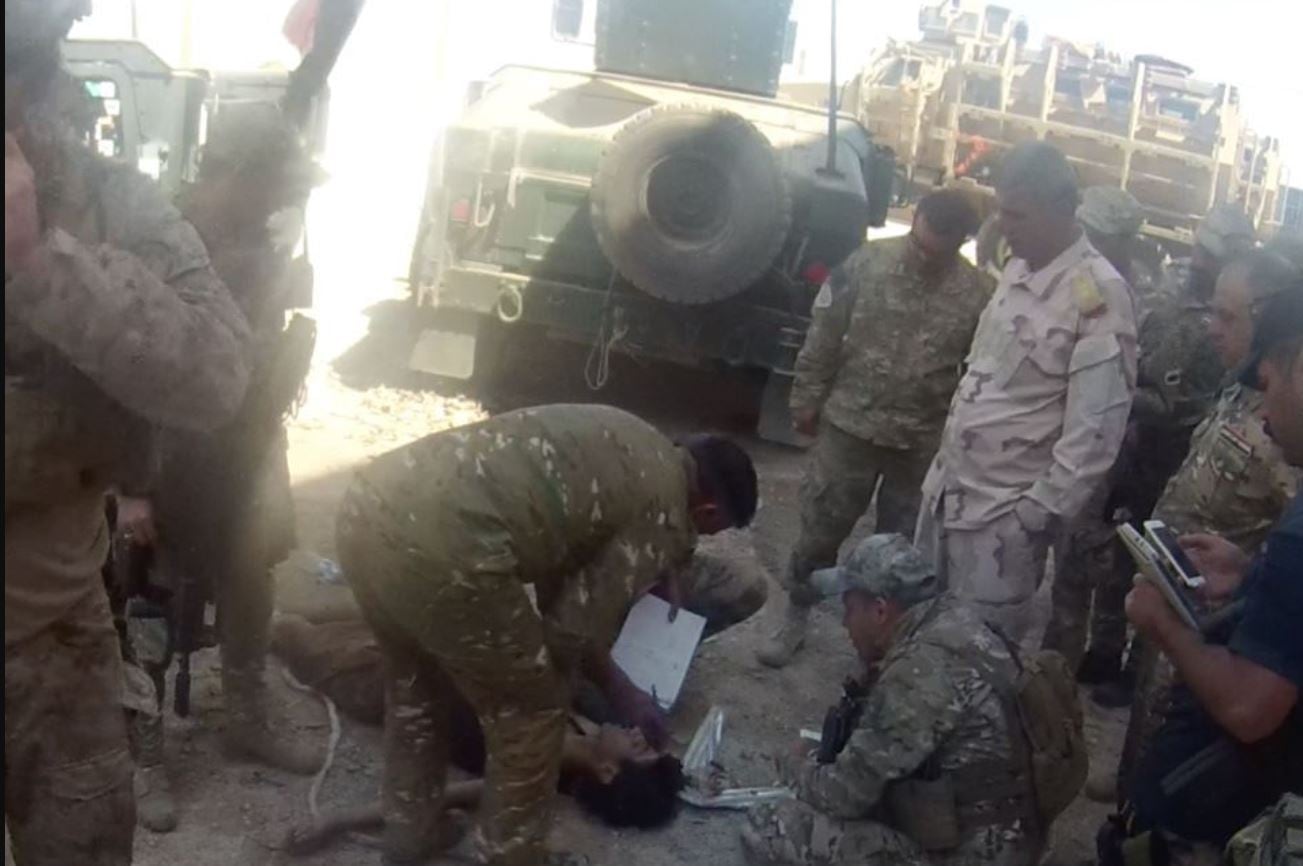
Navy Times has painted a picture of the last moments of the dying ISIS fighter already, using the recollections of SEALs to describe the prisoner struggling to breathe, possibly because of “blast lung,” a condition that often affects those who survive explosions like those that rocked his safe house before he was gunned down trying to escape the missile strikes.
Witnesses described a SEAL inserting a chest tube while Gallagher, using a special kit, performed a cricothyroidotomy — or “cric" — a simple and rapid surgical method for opening up a blocked airway by inserting a tube through an incision in the cricothyroid ligament, according to records provided to Navy Times.
But Navy Times also noted that the prisoner’s body after 20 minutes of treatment ended up inexplicably spangled with medical devices — a trachea tube, at least two chest tubes and a Sternal Intraosseous Infusion, which bores through bone to reach veins when other IVs won’t work, records indicate.
Riffing off the apparent interview of the SO1, the defense motion starts to explain what might have really happened after another SEAL turned off the helmet camera that had been recording the scene.
“At the time that the ISIS fighter was brought to the compound, he was at or near death and, although SOC Gallagher initially attempted to save his life, these efforts quickly proved to be fruitless," the motion stated. “Once it was clear that the ISIS fighter was beyond saving, the platoon’s medic ... took over and began using the newly dead or nearly dead ISIS fighter as a training aid to practice performing medical procedures.”
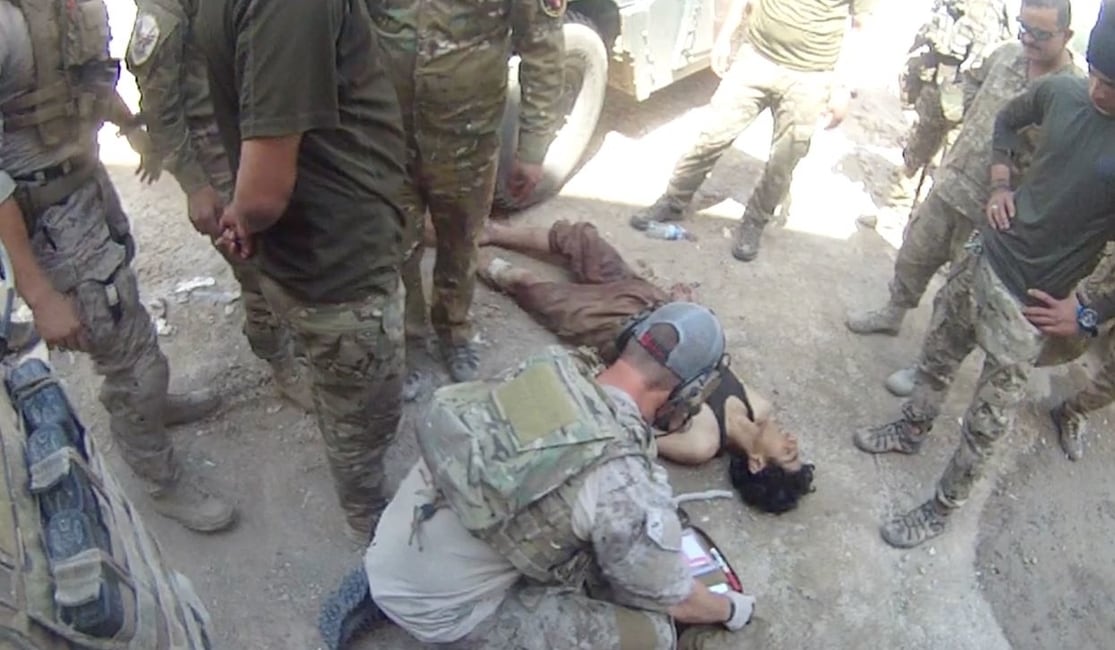
It remains unclear from the NCIS files and the motion how much pain medication flowed into the ISIS fighter’s body — not to mention a failed final dose of Naloxone, a medication designed to bring a victim out of an opiate stupor.
But defense attorneys insist the medic and other members of Alpha Platoon, SEAL Team 7 in broad daylight were “performing, for skill development, medically nonindicated invasive medical procedures on a newly dead or dying ISIS fighter," a finding that’s “significant for a number of reasons and should have been immediately disclosed to the defense.”
The body of the Islamic State fighter, believed to be a young teenager, was never recovered by NCIS so prosecutors have relied on interrogations of two witnesses ― one of them the platoon medic who later told investigators he allegedly left the compound to fetch his sunglasses, and another SEAL who said he went to grab a meal before returning to see Gallagher allegedly stabbing the prisoner in the throat.
Other eyewitnesses said that never happened, including that important re-interview session with the SEAL who was next to Gallagher when the ISIS detainee died, according to records provided to Navy Times.
But during a closed May 22 conference, lead prosecutor Cmdr. Christopher Czaplak and his assistant, Lt. Brian John, allegedly told the defense team that they didn’t have any evidence pointing to a possible alternative cause of death to turn over.
“Instead, they said that everything was done at SOC Gallagher’s direction and everything was medically necessary. They do not have any firsthand knowledge from any witness that there was anything that was medically unnecessary and, moreover, they do not have anyone that has even suggested it,” the motion states.
But one of the prosecutors, Marine Capt. Conor L. McMahon, “remained silent on this issue, except to assert that he was uncomfortable with everything that was going on,” the motion alleges.
Speaking on behalf of both the prosecution team and the sea service, Navy Region Southwest spokesman Brian O’Rourke indicated in a text message to Navy Times that this is “what we expected” and he declined further comment.
Pressure has been building for Navy Region Southwest commander Rear Adm. Bette Bolivar to grant broad immunity from prosecution to at least two SEAL eyewitnesses to the detainee’s death, but she’s rebuffed the efforts.
RELATED
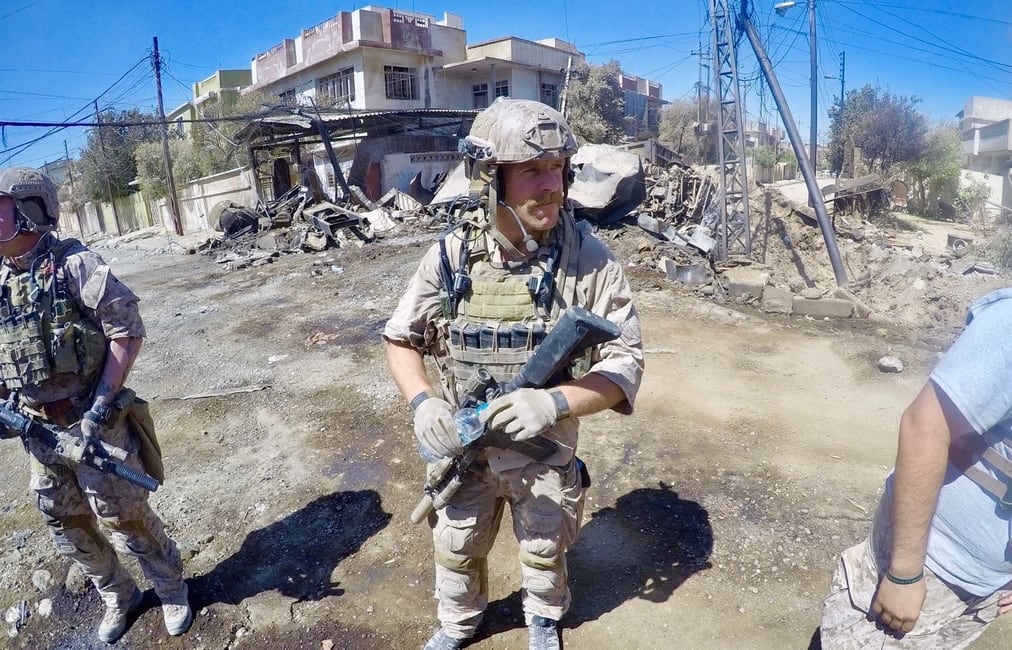
But that’s not all the prosecutors and NCIS are withholding, defense attorneys claim.
They say that on Aug. 23, 2018, less than three weeks before NCIS agents arrested him, the CIA gave Gallagher a polygraph test for a job screening. During the session, Gallagher was asked if he’d committed any war crimes.
“SOC Gallagher denied any wrongdoing and passed the polygraph,” the motion states. “Although the Government administered this polygraph, and discovery materials demonstrate that NCIS investigators reviewed his communications to schedule the polygraph, the prosecution has failed to disclose, or even acknowledge the existence of this significantly exculpatory test.”
And the defense team takes aim at the lead NCIS agent on the case, Joseph Warpinski, for what they say are inaccurate accounts of events he spun from the witness stand during an Article 32 hearing, which operates in the military almost like a civilian grand jury session.
As with the young ISIS fighter who died in the compound, NCIS agents never recovered the bodies of the old man and young girl allegedly shot by Gallagher in a sniping perch.
Instead, they’ve relied on witness statements that often appear to contradict each other. A key witness was a sniper who had allegedly asked another sniper if he saw Gallagher shoot the girl, something Warpinski repeated during the Article 32 hearing.
But it wasn’t true, the defense attorneys wrote.
The sniper had “denied this statement, or any knowledge about the allegations related to the young girl."
And Warpinski wasn’t cross-examined about that apparent problem in his testimony “because the prosecutors turned over shortened copies of the interview videos” that withheld the denial, according to the motion.
As for the old man allegedly shot by Gallagher on Father’s Day in 2017, the same sniper who denied knowing anything about the girl is prepared to testify that he heard Gallagher take a shot, but it might’ve been 20 minutes before the man was hit and he “has no idea whether these two events are related,” the motion states.
Neither Warpinski nor other NCIS officials returned messages seeking comment about copies of the motion sent to them by Navy Times.
RELATED

What’s interesting is that the same Texas-based attorney represents both the SO1 who apparently is prepared to offer damning testimony about the medical experiments on the prisoner of war’s body and the sniper who appears to contradict vital aspects of the twin shootings.
When contacted by Navy Times, Brian Ferguson — an Air Force Reserve major — declined comment.
After the witnesses lawyered up with him, both NCIS and the prosecutors went after Ferguson, attempting to strip him from representing his clients while he tried to hammer out broad immunity deals for them.
But the defense motion reveals that prosecutors also contemplated an indictment against Ferguson and failed.
“Most frightening is that it seems that the harder Mr. Ferguson pushes to protect his clients and give them a legal and protected avenue to tell the truth, the Government responds with ever increasing threats and personal intimidation and attacks on their attorney,” the motion states.
“Through discovery, we learned that prosecutors and NCIS went as far as attempting to put together a criminal case against Mr. Ferguson for obstruction of justice and witness tampering. Luckily for Mr. Ferguson, much of his communications seemed to be memorialized through text messages where he repeatedly urges witnesses to tell the truth and seek the advice of counsel.”
RELATED
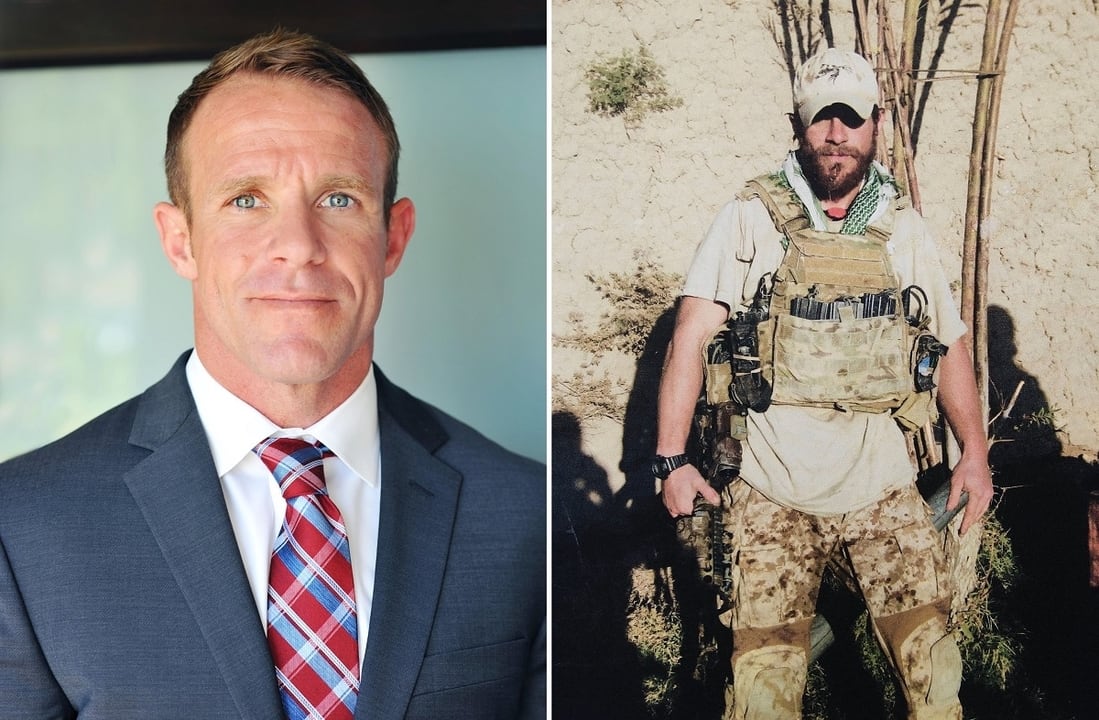
The motion alleges other shenanigans allegedly pursued by prosecutors, including “manipulating witness statements,” threatening “false charges to prevent witnesses from appearing and testifying to the full truth,” leaking documents to “improperly taint the jury pool and prejudice the public” against Gallagher.
“It’s really the totality of the circumstances,” lead defense attorney Timothy Parlatore told Navy Times early Sunday morning. “What’s so disturbing about this case is the entire pattern of misconduct, from beginning to end.”
He didn’t put it into the motion, but Parlatore believes the motives for the alleged gamesmanship that marked this case “from the beginning” stemmed from prosecutors and NCIS agents who “tried to make everything fit what they wanted the case to be, but unfortunately they failed in their duties as gatekeepers.”
“Proper evaluation of this case at the beginning of the investigation would’ve forced them to decide if charges should’ve even been brought. Now they’re over-committed on it, and a couple of them saw this as a career-enhancing case.”
Prine came to Navy Times after stints at the San Diego Union-Tribune and Pittsburgh Tribune-Review. He served in the Marine Corps and the Pennsylvania Army National Guard. His awards include the Joseph Galloway Award for Distinguished Reporting on the military, a first prize from Investigative Reporters & Editors and the Combat Infantryman Badge.
